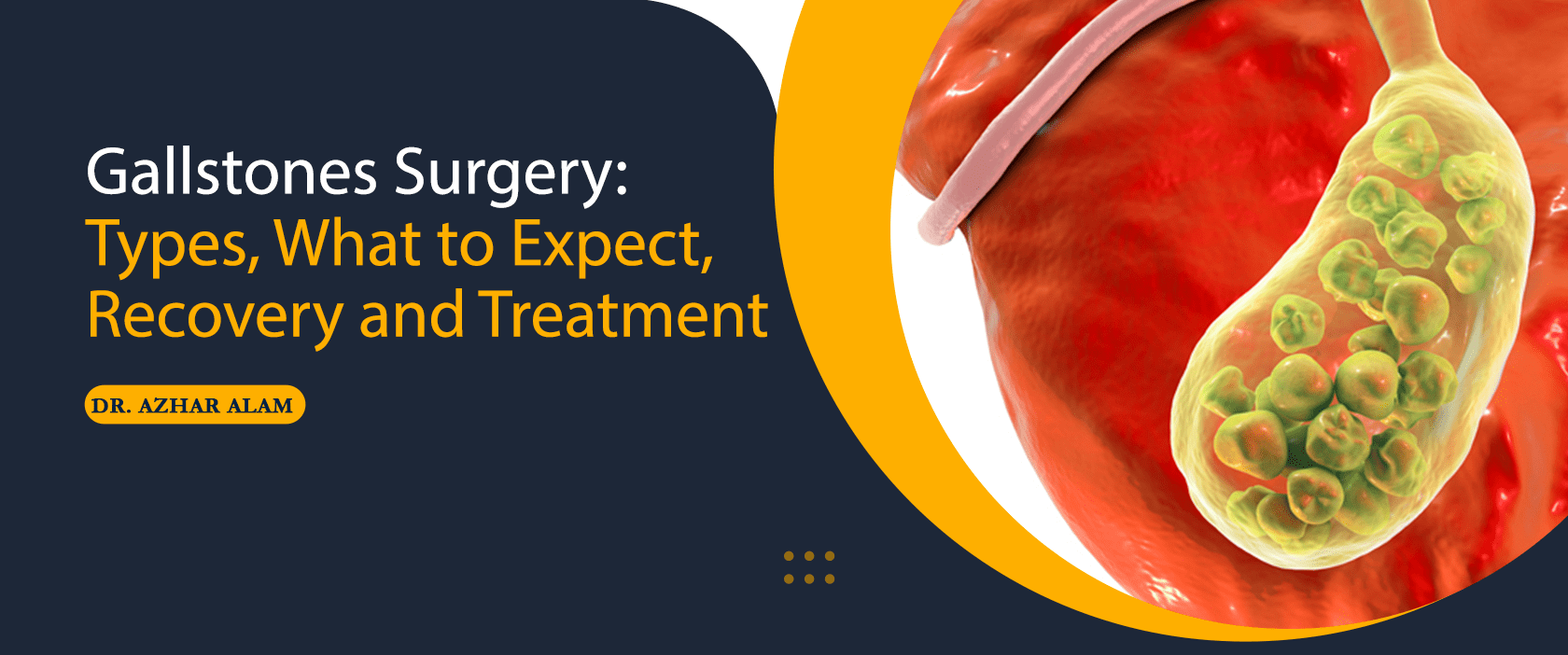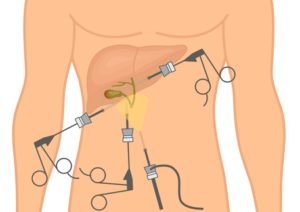

Gallstones Surgery: Types, What to expect and recovery and treatment
A variety of surgical procedures can be utilized to the treatment of gallbladder problems.
If you’re suffering from gallbladder issues due to gallstones or other ailments, your Gallstone doctor might recommend an operation as part of the treatment.
In the majority of cases surgical procedures involve eliminating the gallbladder. But there could be alternative options in certain circumstances There’s many ways to carry out gallbladder removal surgery.
Methods of Gallbladder Surgery
Three surgical options that your Gallbladder doctor in Kolkata can talk to you about, and what you can be expecting from each one.
Cholecystectomy (Gallbladder Removal)
It refers to the term used in medicine used to describe surgical procedure to remove completely the gallbladder. Cholecystectomy is an extremely common procedure. The majority of gallbladder removal procedures are done due to gallstones. The reasons behind the operation are:
- Gallstones within the gallbladder can cause discomfort.
- Gallstones within the bile canals that create discomfort.
- Gallbladder inflammation, typically caused by obstruction of gallstones in the bile ducts.
There are two ways to remove the gallbladder laparascopic and open. Both procedures are done under general anesthesia. This means that you’ll remain completely “out” throughout the procedure.
Laparoscopic Method

A majority of surgeons opt for this procedure if it is possible which means that the gallbladder is removed using several small incisions inside the abdomen.
Certain patients are able to go home on the same day as well, Dr. Azhar Alam says. Others might need to stay an overnight in the hospital.
In this operation it is possible to make three to four small cuts are made through the abdomen wall. The surgeon will insert laparoscopes – a tube that is flexible that houses a small and light video camera into one of the incisions as well as surgical tools into other.
The surgeon will perform the procedure while watching the video screen, and the gallbladder is then taken out via one of the cuts.
In this instance your doctor in Gallbladder stone may recommend tests for imaging, for example, an ultrasound or X-ray to determine if there are gallstones, or other issues in your bile ducts , which weren’t apparent with the laparoscope.
If everything is in order then your wounds will be stitched and you’ll be transferred to a healing region. The entire procedure can take between 1 and two hours.
Open Method
It’s possible that the surgeon may not be able access your gallbladder through the laparoscopic procedure, perhaps because of scar tissue that has been created from prior surgeries, which makes the need for a bigger incision.
If this occurs or you experience any other complications the surgeon could choose to have an open surgery. This procedure involves the making of an incision of about six inches (15 millimeters) on the right-hand side of your abdomen.
The larger cut cuts into muscles and causes additional discomfort and pain later. The muscles, as well as other tissues are pulled back, exposing your gallbladder and liver which the surgeon removes.
Your cut will be closed with a suture, along with one or several drains could be put in to allow pus or fluid to drain.
An open cholecystectomy can take roughly the same time as the laparoscopic one but it has an extended recovery time because of the bigger incision.
Expect to stay for two to three days hospitalized following which you’ll require four to six weeks of recovery from the procedure.
After any surgery A bandage or strips of adhesive will be sewed to the incisions you sutured. The gallbladder is sent to a laboratory for analysis.
Endoscopic Retrograde Cholangiopancreatography (ERCP)
This procedure is utilized to examine and manage a bile duct that is blocked or narrowed.
A blockage may occur in the event that one or more gallstones move out of the gallbladder to the common bile drain which is the conduit for bile that connects the small intestine.
During ERCP the endoscopewhich is a tube that bends and has small cameras and a bright light inside — is passed down the throat to the stomach and small intestinal.
A thin tube, also known as catheter is introduced through the endoscope , and then into the openings of the bile ducts. There, a specific dye is injected to enhance the visibility of the ducts in an X-ray.
If narrowed or blocked areas can be seen in an X-ray scan surgical instruments can be inserted into the endoscope to correct the issue.
You’ll likely feel awake while you undergo an ERCP however, you’ll be prescribed an sedative that will help you calm down.
ERCP is usually done in conjunction with gallbladder elimination.
Cholecystostomy (Gallbladder Draining)
The procedure of draining the gallbladder is generally performed as a temporary solution to ease swelling if removal surgery cannot be completed immediately.
It’s an option for patients with gallbladder issues that are severe or suffer from other ailments that could make gallbladder removal an extremely dangerous procedure.
When you undergo this minimally-invasive procedure Your Gallstone Specialist Doctor will then insert an instrument through your abdomen into your gallbladder. A small tube referred to as catheter will be passed through the needle to empty the gallbladder of bile , and disperse it.
A bulb or drainage bag is connected to the catheter’s end to drain any the excess bile. The bag and catheter will remain attached for a couple of days to several weeks.
When you have a cholecystostomy procedure “you’re in the midst of a gallbladder that’s full of gallstones” Berenzweig notes. This is the reason it’s typically done with a focus on the possibility of removing gallbladders in the future.
Non-surgical Options
One method that is not widely used for dealing with gallstones involves lithotripsy which makes use of powerful sound waves that break down the stones into smaller pieces that allow them to be drained out of the gallbladder.
This technique is frequently employed in conjunction with oral medications that aid in breaking up or dissolving gallstones.
However, it’s unlikely that your surgeon will prescribe the use of lithotripsy to treat gallstones.
Recover From Gallbladder Surgery
The recovery process varies based on the type of Gallbladder surgery is done.
Laparoscopic surgery patients usually can go home the same day that the procedure is completed. In certain cases there may be an overnight stay. The patients are advised to take a break and avoid heavy lifting and swimming for at minimum one week. Patients can typically resume their normal activities within 2 weeks.
When they undergo an open procedure, patients usually stay in hospital for between 1 and two days. When they return they are home, patients are instructed to stay away from sports, heavy lifting and swimming for a couple of weeks. It can take between 6 and 8 weeks to complete recovery.
What are the dangers associated with Gallbladder Removal?
The potential risks associated with removal of the gallbladder include:
- Bleeding
- Infection
- Infection of other bile ducts in the vicinity of the gallbladder.
- Leakage of Bile
- Bowel damage
Dr. Azhar Alam is the Best Laparoscopic Surgeon in Kolkata. Demand an interview or call (91) 90077-09736.
About Docor

Dr. Azhar Alam
MBBS (Honours), MRCS A (UK),
DNB General Surgery
FIAGES (Gastro Intestinal Surgery)
FMAS (Minimal Access Surgery),
MNAMS (New Delhi)
Consultant Gastrointestinal, Advanced Laparoscopic and Laser Surgeon
Assistant Professor of Surgery, KPC Medical College and Hospital




